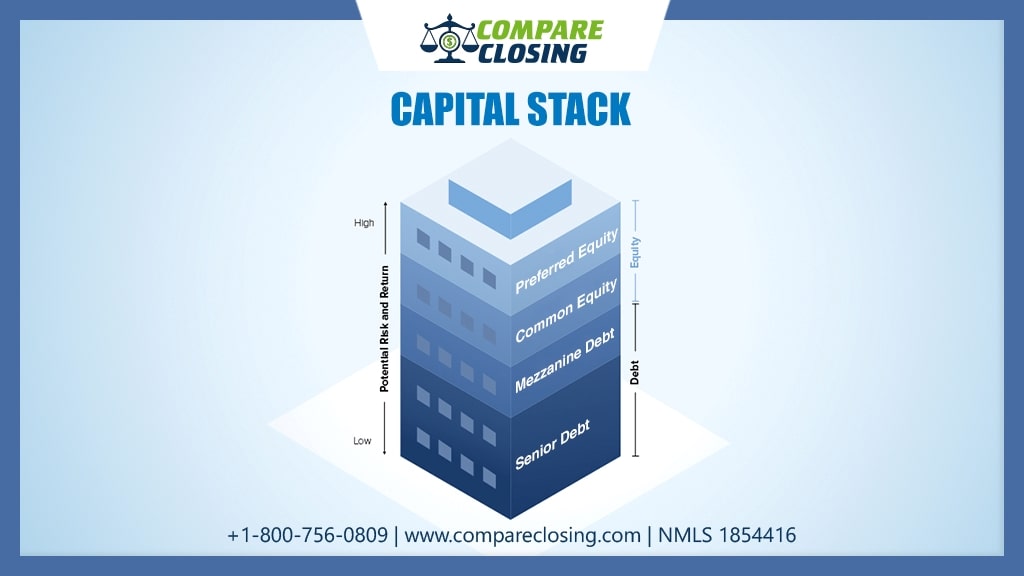It is a representation of the amount of funds required to close a real estate transaction.
As the word suggests it is a stack of funds getting paid from the bottom to the top where bottom means less risk and top means greater risk. It is the layers of capital that go into buying and operating investment in any real estate.
It determines who and in what order will receive income and profits from property. It also defines who has the first right to enclose the asset as collateral if the owner does make payments on the mortgage.
There are four layers in a capital stack which are stacked from the bottom up with their rewards and risks.
The four layers from the bottom up are senior debt, mezzanine debt, preferred equity, and common equity.
If the property in question is being sold, the first to get paid would be the senior debt and the last to get paid would be common equity. Below is a basic example.
Let’s say that you as a real estate investor purchase a property worth $800,000 with a twenty-five percent down payment. This is what the capital stack will look like:





